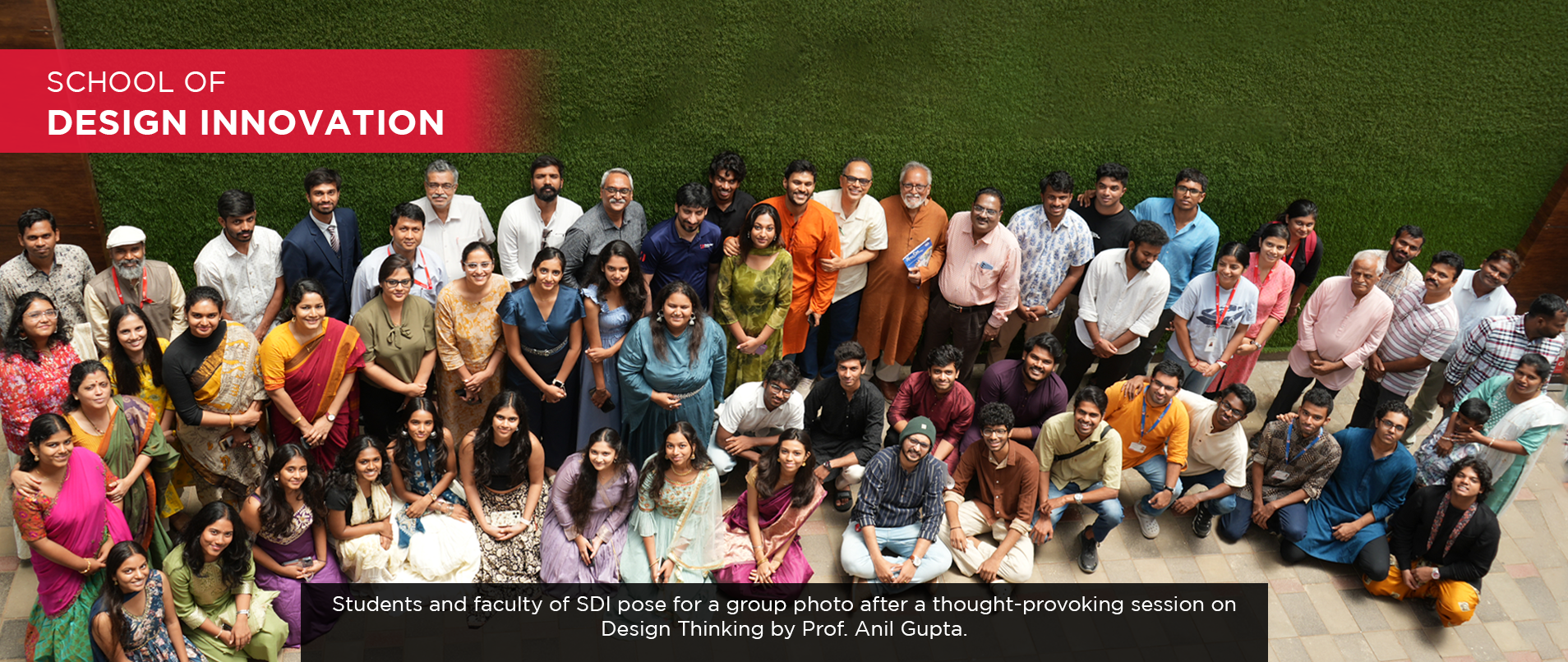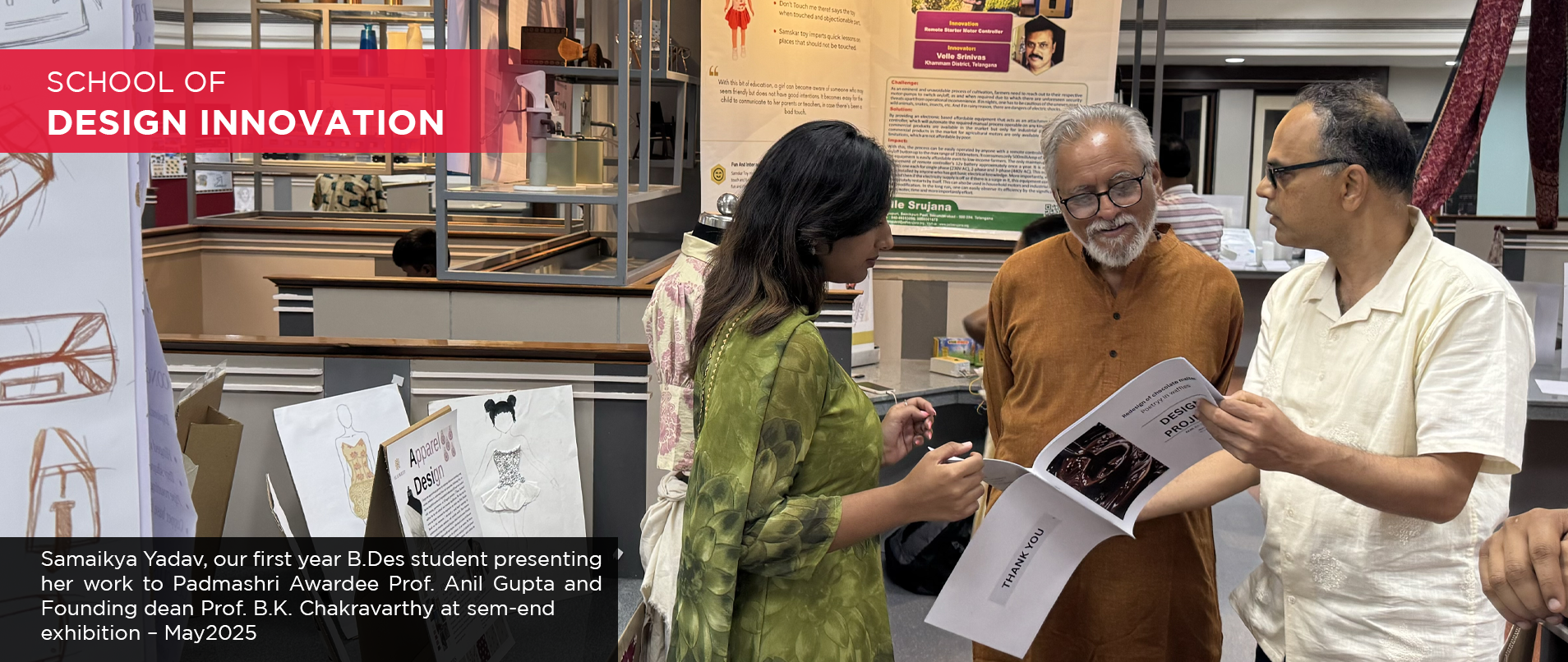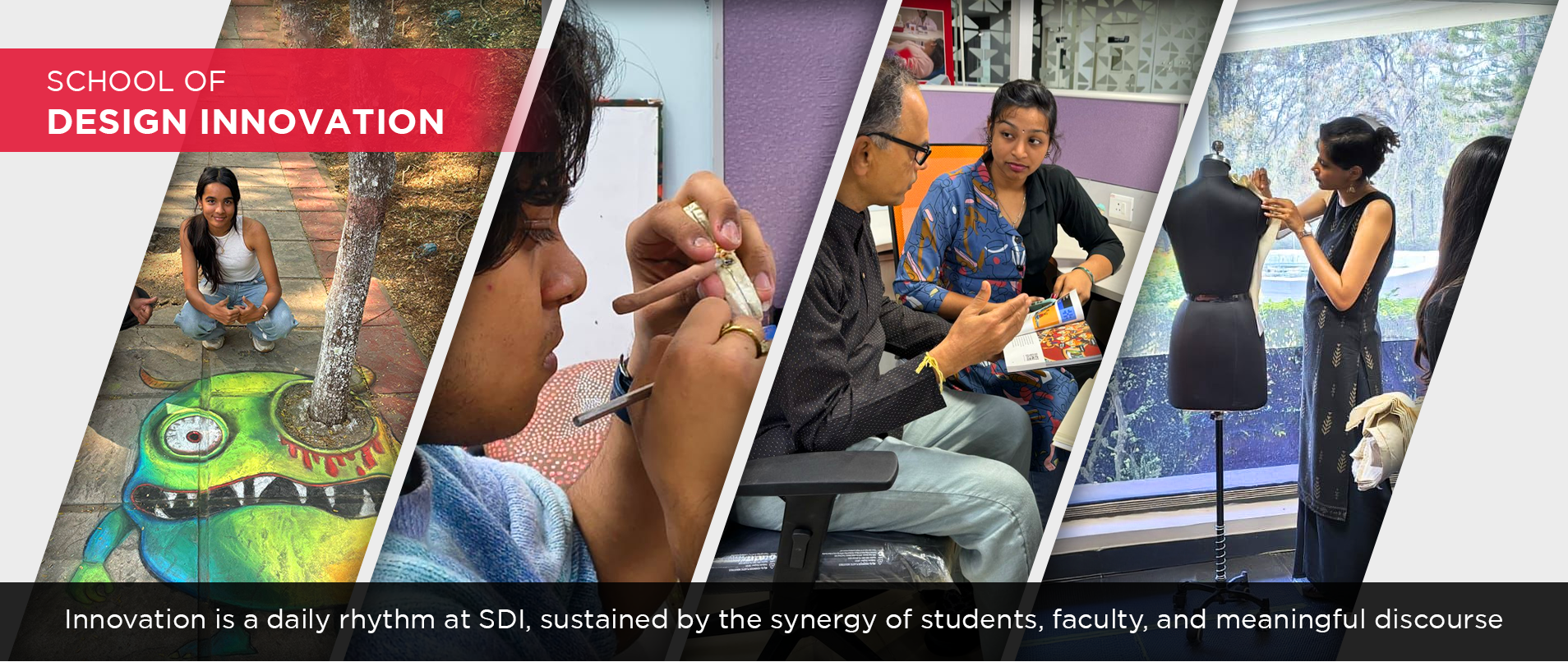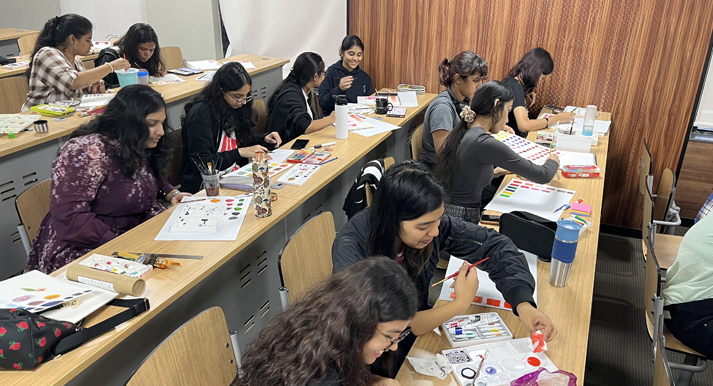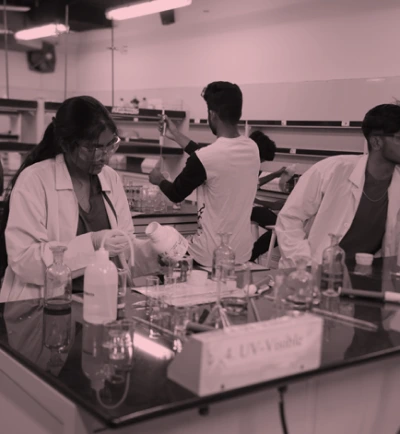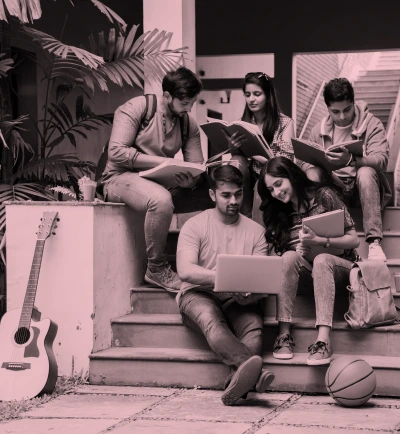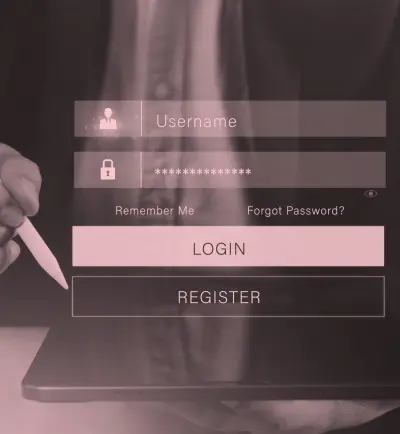Mahindra University’s School of Design Innovation is a paradigm shift in design education focusing on collaborative innovation and foundation courses spread across all schools ranging from engineering to Humanities.
Foundation Year Courses: 1st year
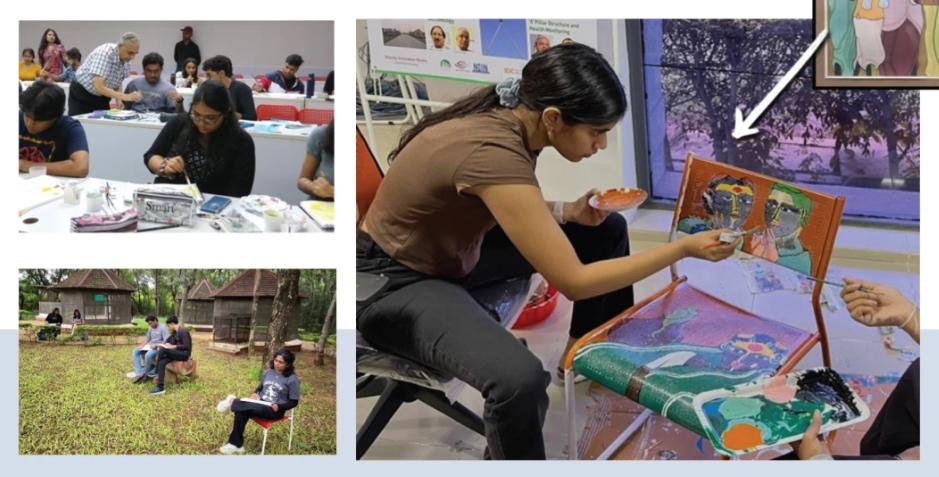
The Joy of Sketching and Coloring
To enable students to experience and imbibe the joy of observing, drawing and recording objects and events.
Objective:
- To explore different mediums of visual representation.
- To improve hand and eye coordination by practice.
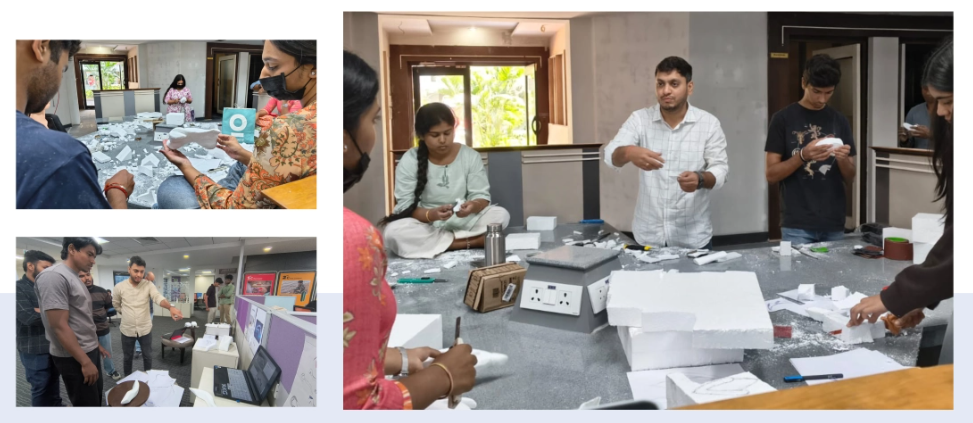
Design Exploration – 2
Gestures to form abstraction
Objective:
- Understand visual abstraction through postures and silhouettes.
- Explore form language by simplifying complex visuals into pure volumes
- Learn to communicate intent through gesture and massing.
Foundation Year Courses: 1st year
The Joy of Sketching and Coloring
To enable students to experience and imbibe the joy of observing, drawing and recording objects and events.
Objective:
- To explore different mediums of visual representation.
- To improve hand and eye coordination by practice.
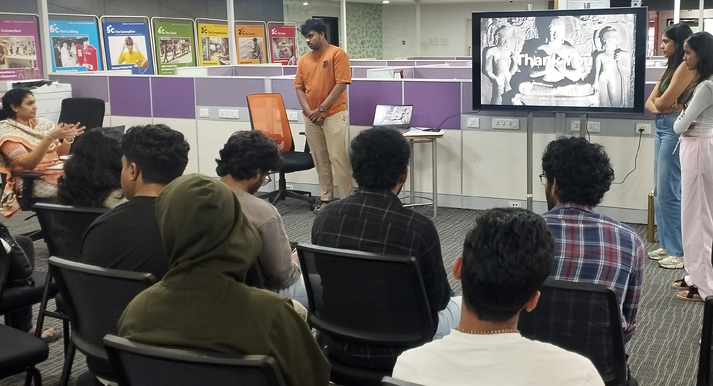
Nature, Human & Design
Examine theories about the origins of life, natural selection and evolutionary design.
Objective:
- Explore the origins of life, human history and natural designs.
- Understand the principles underlying these designs.
- Apply these principles to create innovative solutions for everyday use.
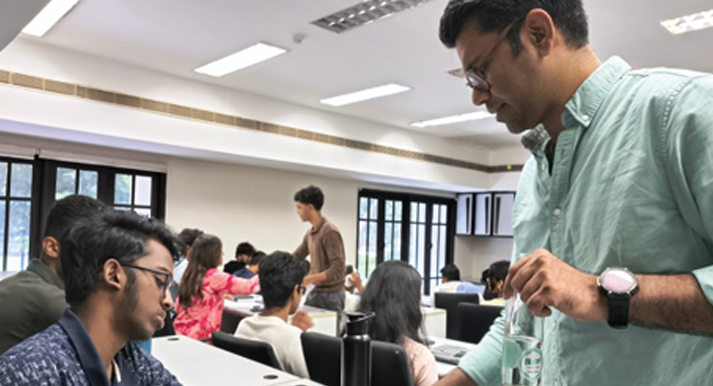
Elements and Principles of Design and AI
Exploring the foundations of visual harmony and creative expression.
Objective:
- Understand and apply the core elements (Points, Lines, Shapes, Color etc.) and principles of Design (balance, contrast, rhythm, etc.)
- Develop visual awareness. Apply design principles to make functional & innovative solutions for real world problems.
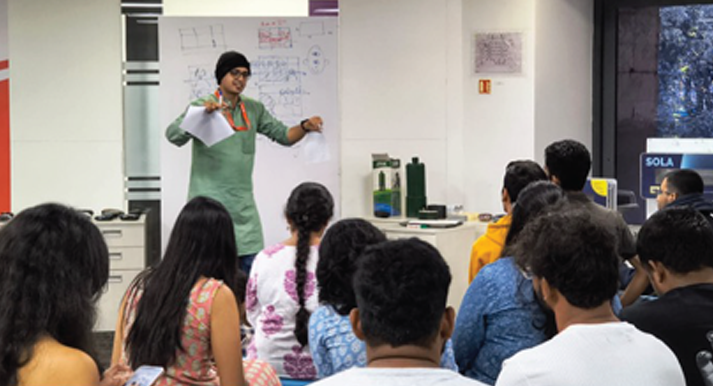
Design Tinkering
Practical hands-on learning by unraveling the art and science behind daily products.
Objective:
- Learning the process of open-ended problem solving through case-studies.
- Exploring solutions without a fixed plan or outcome, by experimenting and making adjustments as per the context.
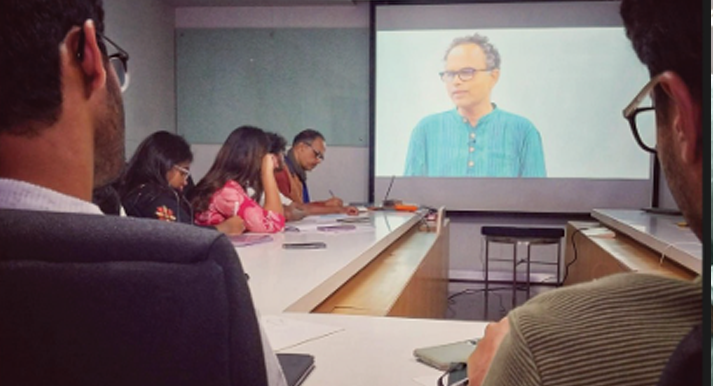
Design Thinking
Chakku’s 7 Concerns of Design Thinking for Innovation
Objective:
- Understand the core principles of design thinking which involves empathizing with user, defining problems, ideating, prototyping, testing and implementing solutions.
- Explore Chakku’s 7 Concerns through case studies and apply them to solve real world problems.
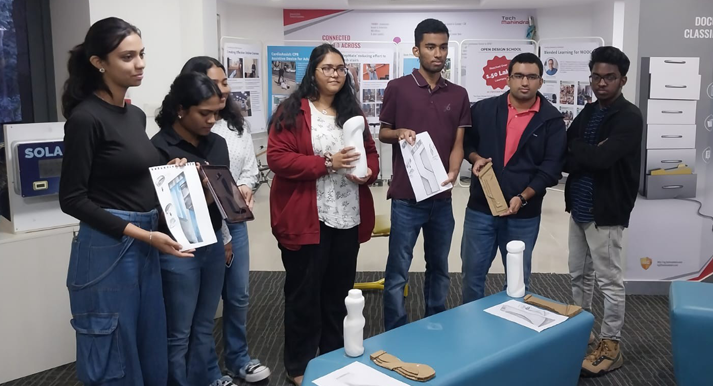
Design Exploration Project
Exploring the complete journey of a product life cycle.
Objective:
- To solve a real world problem, from idea to output.
- To develop working prototypes of products to test and gather user feedback for implementation.
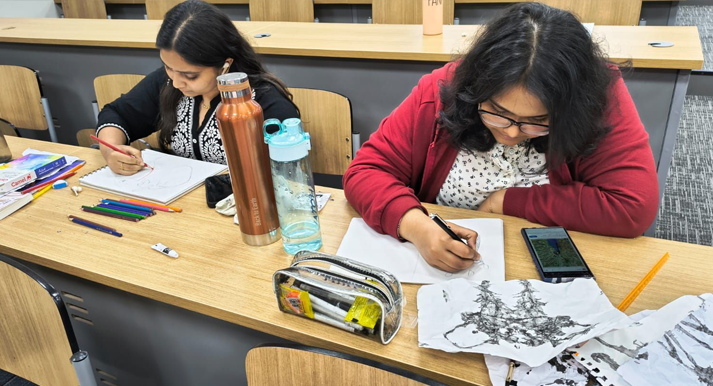
Visualization & Sketching
Imagine more and sketch beyond
Objective:
- To develop creative thinking and visual imagination through sketching.
- To improve observation, memory and expression with practical exercises.
- To build storytelling skills using drawings inspired by real and imagined worlds.
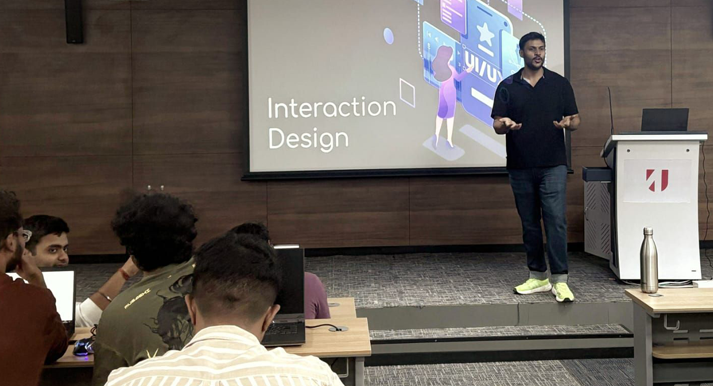
Design Exploration – 1
(Interaction Design)
To humanize technology
Objective:
- To get an introductory understanding of User Interaction and User Experience.
- To learn how to develop and design websites/apps (and other UI) from scratch.
- To experience hands-on tools for prototyping like Figma, Miro etc.
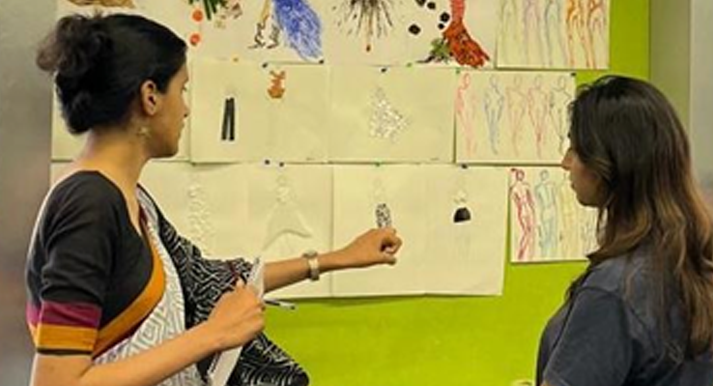
Design Exploration – 1
(Apparel Design)
To create journey towards contemporary fashion
Objective:
- To explore and transform architectural motifs from Indian structures into contemporary textile designs, blending traditional aesthetics with modern design.
- To Develop basis skills of fabric handling & manipulation and understand the 3D body form.
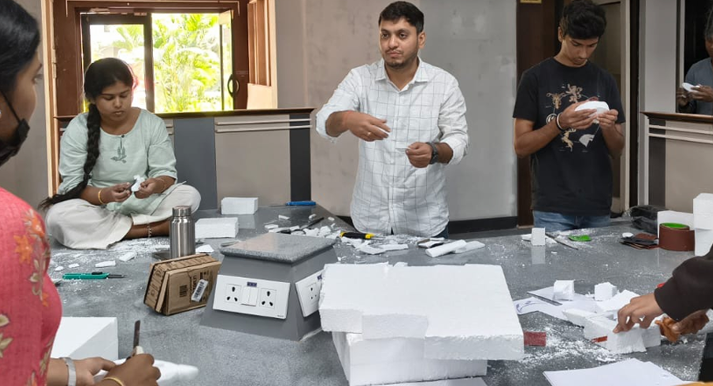
Design Exploration – 2
(Industrial Design)
Gestures to form abstraction
Objective:
- Understand visual abstraction through postures and silhouettes.
- Explore form language by simplifying complex visuals into pure volumes
- Learn to communicate intent through gesture and massing.
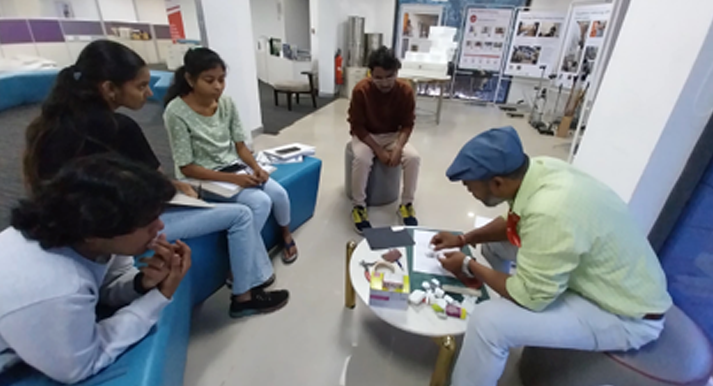
Design Exploration – 2
(Communication Design)
Frame stories, shape perception
Objective:
- Develop interdisciplinary communication through, research interviews and storytelling.
- Apply design thinking to craft visual narratives using scripting and story-boarding.
- Incorporate rich media and creative expression through media production.
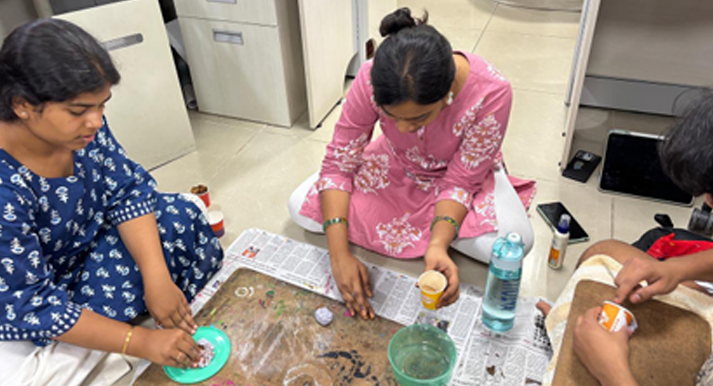
Sustainable Design
Solution for a changed climate
Objective:
- Develop awareness of sustainable design principles.
- Apply eco-friendly materials and processes.
- Foster Systems Thinking and User-Centric sustainability
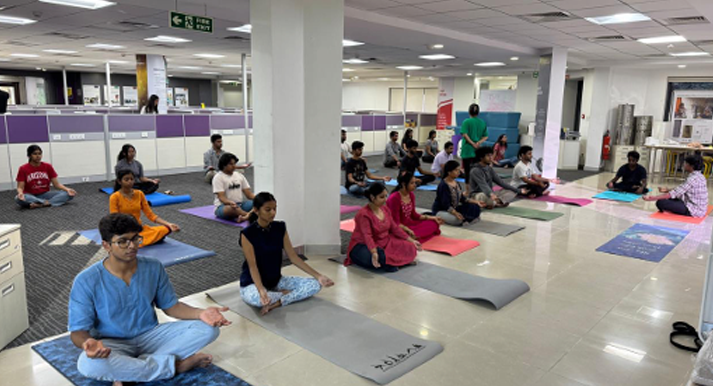
Yoga and Meditation
Yoga is as essential as sketching for design
Objective:
- Enhancing focus and clarity.
- Boosting creativity.
- Develop Mind-Body coordination.
- Empathy and awareness.
1st Year Courses:
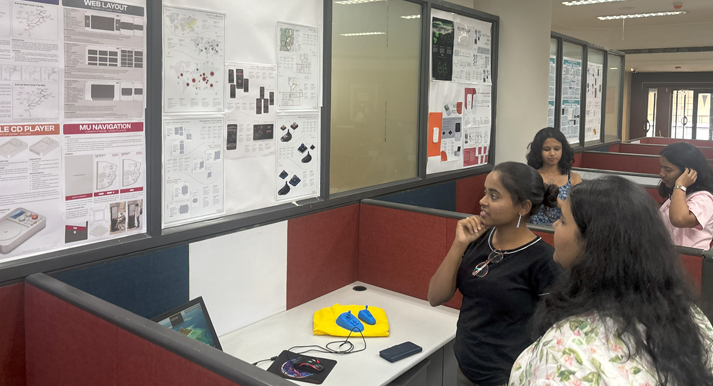
Elements of Design – Applied
Applying Elements of Design to their specializations
Objective:
- To apply the structural and relational principles of design to the elements used and to analyze their designs through intent-driven articulation
- To explore the elements of points, lines, planes, and volumes with their visual features according to the student’s specializations.
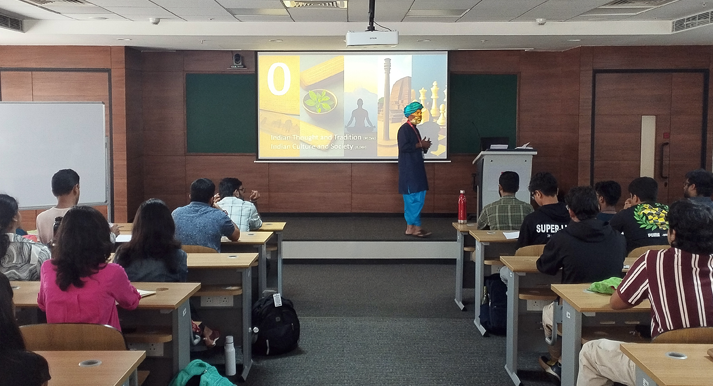
Indian Thought & Tradition
Connecting traditions with contemporary design practice
Objective:
- Explore the origins of life, human history and natural designs.
- Compare and analyze the principles underlying these designs.
- Apply and articulate these principles to create innovative solutions for everyday use.
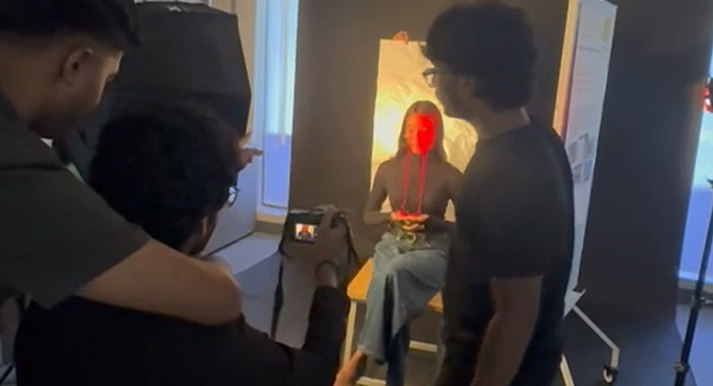
Photography and Moving Images
Crafting Visual Narratives that Move Minds
Objective:
- To develop a critical and creative understanding of photography and moving images as tools for visual storytelling, communication.
- To equip students with advanced technical, aesthetic, and conceptual skills for producing and curating photographic and cinematic works that respond to contemporary contexts.
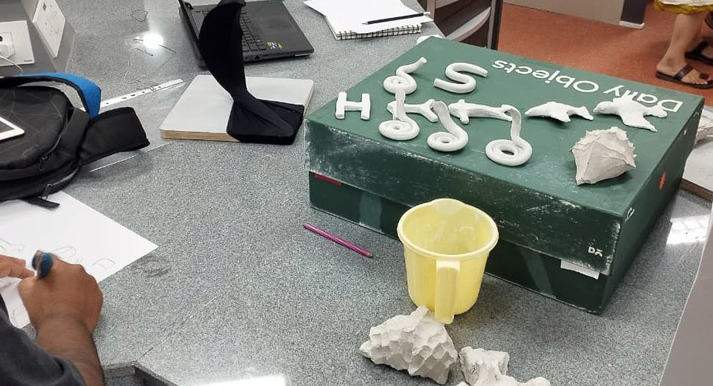
Form and Aesthetics
Discovering the Language of Form
Objective:
- To enable students to understand and articulate the expressive potential of form by exploring how objects communicate meaning, evoke emotion, and influence user experience.
- To cultivate a hands-on sensitivity to structure, proportion, materiality, and aesthetics through iterative experimentation.
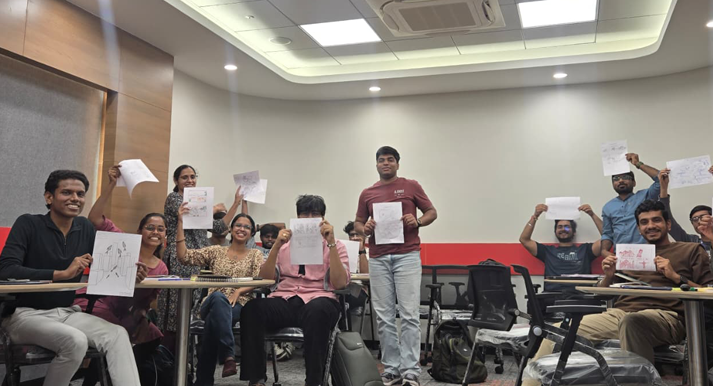
Entrepreneurship Practice
From Ideas to Impact
Objective:
- Interpreting the constraints for design innovation through early industry interactions.
- Foster entrepreneurial mindset to take their design solutions forward and create impact in the society.
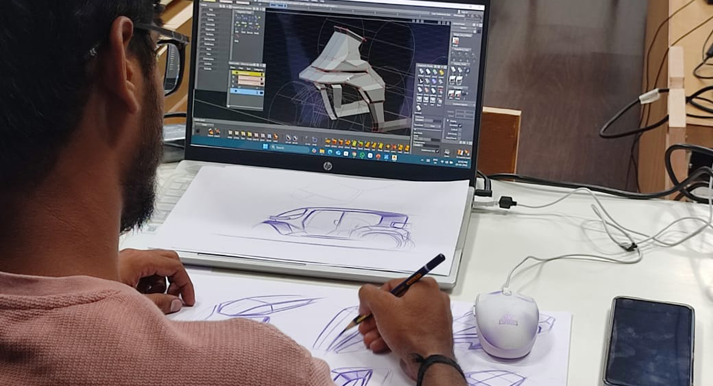
Design Methods for Project
Collaborative Innovation
Objective:
- Identifying problems from real-world situations and delivering solutions to enhance well-being of people.
- Integrating collaborative and participatory models of innovation to gather varied perspectives and drive sustainable development
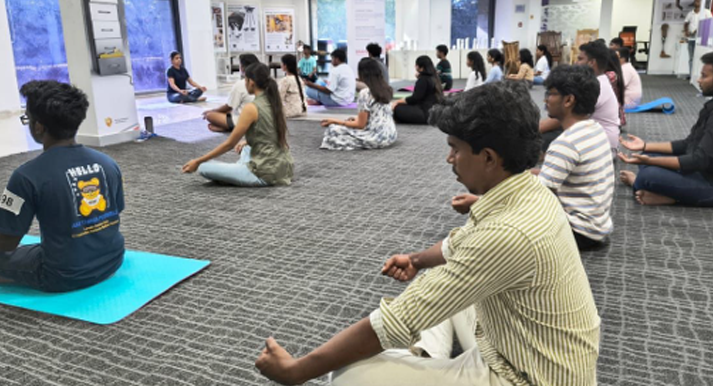
Yoga & Design
Balancing the Mind, Body, and the Act of Design
Objective:
- To cultivate mindfulness, focus, and self-awareness through yogic practices that enhance creative thinking, empathy, and well-being in the design process.
- To explore the parallels between yoga and design practice.
1st Year Courses:
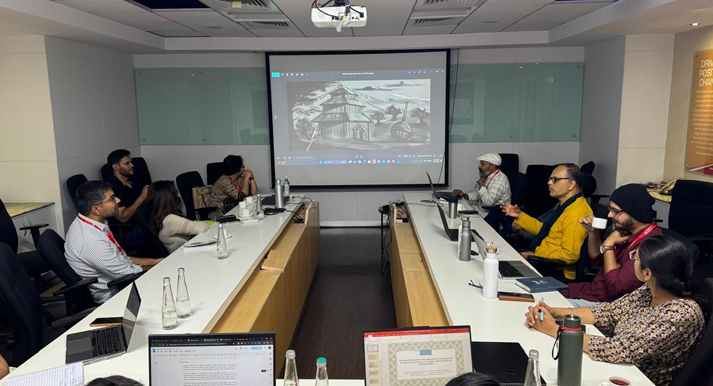
Research Methods in Design
Comprehensive overview of research methods relevant to design disciplines.
Objective:
- To explore a wide range of methodologies, from qualitative and quantitative techniques to mixed-method approaches.
- Cover foundational principles, tools, and strategies for conducting effective research, enabling students to identify, analyze, and implement methods that align with their specific design inquiries.
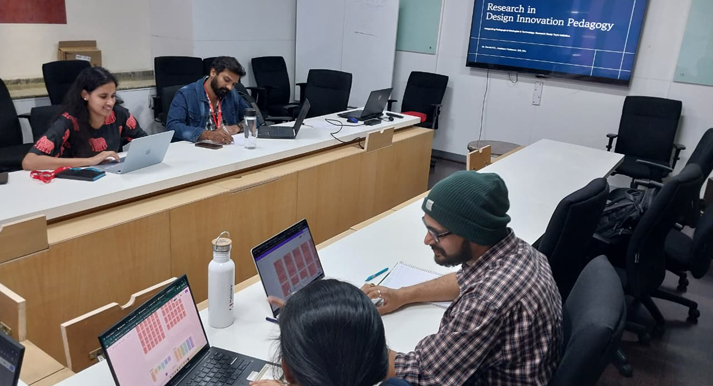
Research in Design Innovation Pedagogy
Rethinking How Design is Taught, Learned, and Experienced.
Objective:
- To investigate contemporary approaches, frameworks, and methodologies that shape teaching and learning within design education and innovation-driven contexts.
- To enable students to design and conduct pedagogical research that informs new strategies on Design Innovation Pedagogy.
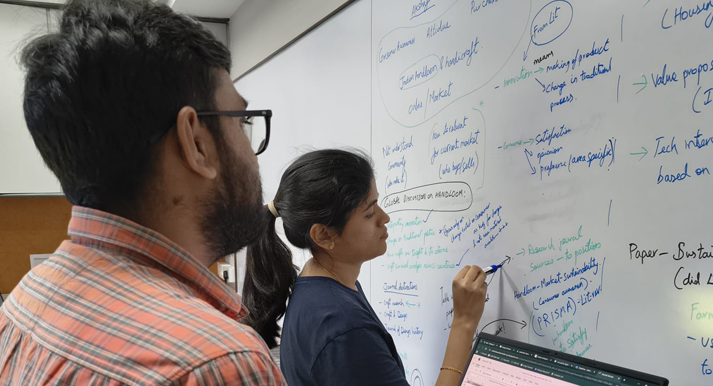
Exploratory Design Research Project 1
Where Questions Shape the Design Journey.
Objective:
- Introductory design project for the students to conduct initial research and analysis which will pivot into being a pilot study to their main research.
- To write research papers based on the pilot study and get feedback from international design research community.
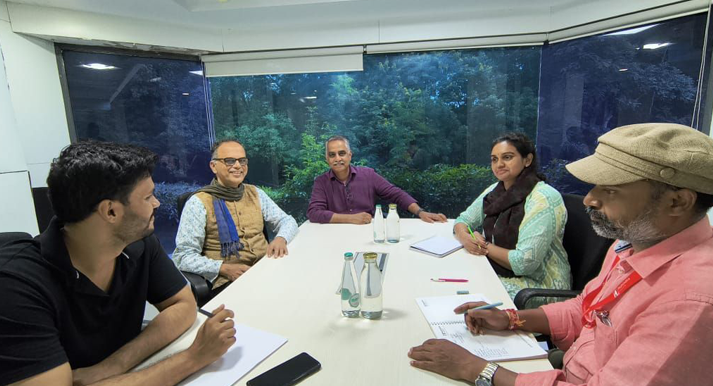
Academic Writing and Presentation Skills
Writing ideas with Clarity, Confidence, and Impact.
Objective:
- To develop critical reading, writing, and presentation skills that enable students to articulate design ideas, arguments, and research findings effectively.
- To enhance coherence, structure, and visual communication in written and oral presentations,
Foundation Year Courses: 1st year
The Joy of Sketching and Coloring
To enable students to experience and imbibe the joy of observing, drawing and recording objects and events.
Objective:
- To explore different mediums of visual representation.
- To improve hand and eye coordination by practice.

Nature, Human & Design
Examine theories about the origins of life, natural selection and evolutionary design.
Objective:
- Explore the origins of life, human history and natural designs.
- Understand the principles underlying these designs.
- Apply these principles to create innovative solutions for everyday use.

Elements and Principles of Design and AI
Exploring the foundations of visual harmony and creative expression.
Objective:
- Understand and apply the core elements (Points, Lines, Shapes, Color etc.) and principles of Design (balance, contrast, rhythm, etc.)
- Develop visual awareness. Apply design principles to make functional & innovative solutions for real world problems.

Design Tinkering
Practical hands-on learning by unraveling the art and science behind daily products.
Objective:
- Learning the process of open-ended problem solving through case-studies.
- Exploring solutions without a fixed plan or outcome, by experimenting and making adjustments as per the context.

Design Thinking
Chakku’s 7 Concerns of Design Thinking for Innovation
Objective:
- Understand the core principles of design thinking which involves empathizing with user, defining problems, ideating, prototyping, testing and implementing solutions.
- Explore Chakku’s 7 Concerns through case studies and apply them to solve real world problems.

Design Exploration Project
Exploring the complete journey of a product life cycle.
Objective:
- To solve a real world problem, from idea to output.
- To develop working prototypes of products to test and gather user feedback for implementation.

Visualization & Sketching
Imagine more and sketch beyond
Objective:
- To develop creative thinking and visual imagination through sketching.
- To improve observation, memory and expression with practical exercises.
- To build storytelling skills using drawings inspired by real and imagined worlds.

Design Exploration – 1
(Interaction Design)
To humanize technology
Objective:
- To get an introductory understanding of User Interaction and User Experience.
- To learn how to develop and design websites/apps (and other UI) from scratch.
- To experience hands-on tools for prototyping like Figma, Miro etc.

Design Exploration – 1
(Apparel Design)
To create journey towards contemporary fashion
Objective:
- To explore and transform architectural motifs from Indian structures into contemporary textile designs, blending traditional aesthetics with modern design.
- To Develop basis skills of fabric handling & manipulation and understand the 3D body form.

Design Exploration – 2
(Industrial Design)
Gestures to form abstraction
Objective:
- Understand visual abstraction through postures and silhouettes.
- Explore form language by simplifying complex visuals into pure volumes
- Learn to communicate intent through gesture and massing.

Design Exploration – 2
(Communication Design)
Frame stories, shape perception
Objective:
- Develop interdisciplinary communication through, research interviews and storytelling.
- Apply design thinking to craft visual narratives using scripting and story-boarding.
- Incorporate rich media and creative expression through media production.

Sustainable Design
Solution for a changed climate
Objective:
- Develop awareness of sustainable design principles.
- Apply eco-friendly materials and processes.
- Foster Systems Thinking and User-Centric sustainability

Yoga and Meditation
Yoga is as essential as sketching for design
Objective:
- Enhancing focus and clarity.
- Boosting creativity.
- Develop Mind-Body coordination.
- Empathy and awareness.
1st Year Courses:

Elements of Design – Applied
Applying Elements of Design to their specializations
Objective:
- To apply the structural and relational principles of design to the elements used and to analyze their designs through intent-driven articulation
- To explore the elements of points, lines, planes, and volumes with their visual features according to the student’s specializations.

Indian Thought & Tradition
Connecting traditions with contemporary design practice
Objective:
- Explore the origins of life, human history and natural designs.
- Compare and analyze the principles underlying these designs.
- Apply and articulate these principles to create innovative solutions for everyday use.

Photography and Moving Images
Crafting Visual Narratives that Move Minds
Objective:
- To develop a critical and creative understanding of photography and moving images as tools for visual storytelling, communication.
- To equip students with advanced technical, aesthetic, and conceptual skills for producing and curating photographic and cinematic works that respond to contemporary contexts.

Form and Aesthetics
Discovering the Language of Form
Objective:
- To enable students to understand and articulate the expressive potential of form by exploring how objects communicate meaning, evoke emotion, and influence user experience.
- To cultivate a hands-on sensitivity to structure, proportion, materiality, and aesthetics through iterative experimentation.

Entrepreneurship Practice
From Ideas to Impact
Objective:
- Interpreting the constraints for design innovation through early industry interactions.
- Foster entrepreneurial mindset to take their design solutions forward and create impact in the society.

Design Methods for Project
Collaborative Innovation
Objective:
- Identifying problems from real-world situations and delivering solutions to enhance well-being of people.
- Integrating collaborative and participatory models of innovation to gather varied perspectives and drive sustainable development

Yoga & Design
Balancing the Mind, Body, and the Act of Design
Objective:
- To cultivate mindfulness, focus, and self-awareness through yogic practices that enhance creative thinking, empathy, and well-being in the design process.
- To explore the parallels between yoga and design practice.
1st Year Courses:

Research Methods in Design
Comprehensive overview of research methods relevant to design disciplines.
Objective:
- To explore a wide range of methodologies, from qualitative and quantitative techniques to mixed-method approaches.
- Cover foundational principles, tools, and strategies for conducting effective research, enabling students to identify, analyze, and implement methods that align with their specific design inquiries.

Research in Design Innovation Pedagogy
Rethinking How Design is Taught, Learned, and Experienced.
Objective:
- To investigate contemporary approaches, frameworks, and methodologies that shape teaching and learning within design education and innovation-driven contexts.
- To enable students to design and conduct pedagogical research that informs new strategies on Design Innovation Pedagogy.

Exploratory Design Research Project 1
Where Questions Shape the Design Journey.
Objective:
- Introductory design project for the students to conduct initial research and analysis which will pivot into being a pilot study to their main research.
- To write research papers based on the pilot study and get feedback from international design research community.

Academic Writing and Presentation Skills
Writing ideas with Clarity, Confidence, and Impact.
Objective:
- To develop critical reading, writing, and presentation skills that enable students to articulate design ideas, arguments, and research findings effectively.
- To enhance coherence, structure, and visual communication in written and oral presentations,
Foundation Year Courses: 1st year
The Joy of Sketching and Coloring
To enable students to experience and imbibe the joy of observing, drawing and recording objects and events.
Objective:
- To explore different mediums of visual representation.
- To improve hand and eye coordination by practice.

Nature, Human & Design
Examine theories about the origins of life, natural selection and evolutionary design.
Objective:
- Explore the origins of life, human history and natural designs.
- Understand the principles underlying these designs.
- Apply these principles to create innovative solutions for everyday use.

Elements and Principles of Design and AI
Exploring the foundations of visual harmony and creative expression.
Objective:
- Understand and apply the core elements (Points, Lines, Shapes, Color etc.) and principles of Design (balance, contrast, rhythm, etc.)
- Develop visual awareness. Apply design principles to make functional & innovative solutions for real world problems.

Design Tinkering
Practical hands-on learning by unraveling the art and science behind daily products.
Objective:
- Learning the process of open-ended problem solving through case-studies.
- Exploring solutions without a fixed plan or outcome, by experimenting and making adjustments as per the context.

Design Thinking
Chakku’s 7 Concerns of Design Thinking for Innovation
Objective:
- Understand the core principles of design thinking which involves empathizing with user, defining problems, ideating, prototyping, testing and implementing solutions.
- Explore Chakku’s 7 Concerns through case studies and apply them to solve real world problems.

Design Exploration Project
Exploring the complete journey of a product life cycle.
Objective:
- To solve a real world problem, from idea to output.
- To develop working prototypes of products to test and gather user feedback for implementation.

Visualization & Sketching
Imagine more and sketch beyond
Objective:
- To develop creative thinking and visual imagination through sketching.
- To improve observation, memory and expression with practical exercises.
- To build storytelling skills using drawings inspired by real and imagined worlds.

Design Exploration – 1
(Interaction Design)
To humanize technology
Objective:
- To get an introductory understanding of User Interaction and User Experience.
- To learn how to develop and design websites/apps (and other UI) from scratch.
- To experience hands-on tools for prototyping like Figma, Miro etc.

Design Exploration – 1
(Apparel Design)
To create journey towards contemporary fashion
Objective:
- To explore and transform architectural motifs from Indian structures into contemporary textile designs, blending traditional aesthetics with modern design.
- To Develop basis skills of fabric handling & manipulation and understand the 3D body form.

Design Exploration – 2
(Industrial Design)
Gestures to form abstraction
Objective:
- Understand visual abstraction through postures and silhouettes.
- Explore form language by simplifying complex visuals into pure volumes
- Learn to communicate intent through gesture and massing.

Design Exploration – 2
(Communication Design)
Frame stories, shape perception
Objective:
- Develop interdisciplinary communication through, research interviews and storytelling.
- Apply design thinking to craft visual narratives using scripting and story-boarding.
- Incorporate rich media and creative expression through media production.

Sustainable Design
Solution for a changed climate
Objective:
- Develop awareness of sustainable design principles.
- Apply eco-friendly materials and processes.
- Foster Systems Thinking and User-Centric sustainability

Yoga and Meditation
Yoga is as essential as sketching for design
Objective:
- Enhancing focus and clarity.
- Boosting creativity.
- Develop Mind-Body coordination.
- Empathy and awareness.
1st Year Courses:

Elements of Design – Applied
Applying Elements of Design to their specializations
Objective:
- To apply the structural and relational principles of design to the elements used and to analyze their designs through intent-driven articulation
- To explore the elements of points, lines, planes, and volumes with their visual features according to the student’s specializations.

Indian Thought & Tradition
Connecting traditions with contemporary design practice
Objective:
- Explore the origins of life, human history and natural designs.
- Compare and analyze the principles underlying these designs.
- Apply and articulate these principles to create innovative solutions for everyday use.

Photography and Moving Images
Crafting Visual Narratives that Move Minds
Objective:
- To develop a critical and creative understanding of photography and moving images as tools for visual storytelling, communication.
- To equip students with advanced technical, aesthetic, and conceptual skills for producing and curating photographic and cinematic works that respond to contemporary contexts.

Form and Aesthetics
Discovering the Language of Form
Objective:
- To enable students to understand and articulate the expressive potential of form by exploring how objects communicate meaning, evoke emotion, and influence user experience.
- To cultivate a hands-on sensitivity to structure, proportion, materiality, and aesthetics through iterative experimentation.

Entrepreneurship Practice
From Ideas to Impact
Objective:
- Interpreting the constraints for design innovation through early industry interactions.
- Foster entrepreneurial mindset to take their design solutions forward and create impact in the society.

Design Methods for Project
Collaborative Innovation
Objective:
- Identifying problems from real-world situations and delivering solutions to enhance well-being of people.
- Integrating collaborative and participatory models of innovation to gather varied perspectives and drive sustainable development

Yoga & Design
Balancing the Mind, Body, and the Act of Design
Objective:
- To cultivate mindfulness, focus, and self-awareness through yogic practices that enhance creative thinking, empathy, and well-being in the design process.
- To explore the parallels between yoga and design practice.
1st Year Courses:

Research Methods in Design
Comprehensive overview of research methods relevant to design disciplines.
Objective:
- To explore a wide range of methodologies, from qualitative and quantitative techniques to mixed-method approaches.
- Cover foundational principles, tools, and strategies for conducting effective research, enabling students to identify, analyze, and implement methods that align with their specific design inquiries.

Research in Design Innovation Pedagogy
Rethinking How Design is Taught, Learned, and Experienced.
Objective:
- To investigate contemporary approaches, frameworks, and methodologies that shape teaching and learning within design education and innovation-driven contexts.
- To enable students to design and conduct pedagogical research that informs new strategies on Design Innovation Pedagogy.

Exploratory Design Research Project 1
Where Questions Shape the Design Journey.
Objective:
- Introductory design project for the students to conduct initial research and analysis which will pivot into being a pilot study to their main research.
- To write research papers based on the pilot study and get feedback from international design research community.

Academic Writing and Presentation Skills
Writing ideas with Clarity, Confidence, and Impact.
Objective:
- To develop critical reading, writing, and presentation skills that enable students to articulate design ideas, arguments, and research findings effectively.
- To enhance coherence, structure, and visual communication in written and oral presentations,

